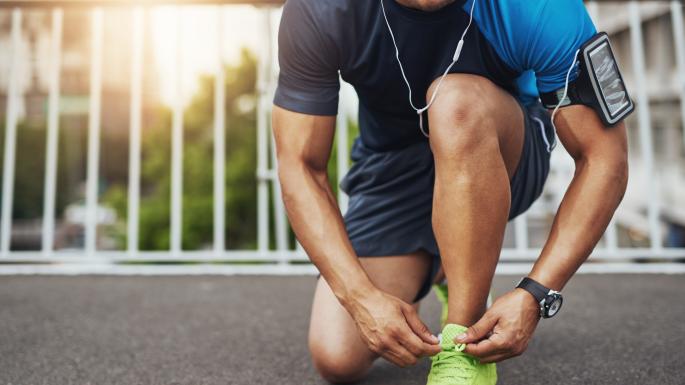
A variety of workouts can be a great way to get your teenager in shape. Aerobic activity is something teens need to do at least 60 minutes each day. Another important component of a healthy workout is strength training, which builds muscle and boosts metabolism. Flexibility is the third important component. Teens should work to improve their flexibility and balance their physical activities.
Getting your teen moving
It is vital to encourage your teen to exercise with healthy workouts. Make exercise a fun activity and encourage your teen to continue the activities he or she enjoys. Ask your teen for a list of their favorite activities to keep them motivated. Encourage your teen and a friend to exercise together. This will boost their motivation and give them some social time.
Making a workout plan
To create a healthy workout program for teens, there are a few things you need to remember. To start, ensure your child is getting enough calories to keep them going during workouts. Before you start giving your teen a sports schedule, consult a doctor or a personal trainer. You can then divide the exercises into various parts of the body after you have established a schedule.

Do a cardio workout
Performing a cardio workout for teens doesn't have to be as complicated as it sounds. You can burn calories with a variety of exercises for teens, including jumping jacks. The goal is for the arms and legs to be close to the body. The routine can also be done in front of the mirror if the teenager is embarrassed by the idea of doing a different exercise. Properly done, the routine can correct leg imbalances.
Strength training exercises
Teens can have fun with strength training, but teens should be aware of safety precautions. An excellent rule of thumb for teens is to not lift too many pounds during a workout. Exercising excessively can stress joints, tear ligaments and cause separate growth plates. Talking to a trainer or physician if your teen has not yet reached adulthood is advisable. Teens should not only exercise properly, but also eat a healthy diet that includes plenty of fruits, vegetables, and other nutrients.
Jumping rope
Whether your teen enjoys boxing, gymnastics, or jumping rope, you'll find that jumping rope is a fun and healthy workout. Jumping rope has many benefits, including strength-building and cardiovascular benefits. This will increase your speed, which is essential for sprinting. You'll also burn calories and tone up your muscles. This simple exercise builds muscle mass in the abdomen area, thighs, as well as calves.

Dancing
Not only is dance a great form of aerobic exercise but there are other benefits. Practicing dance helps teens develop their mental and physical health. It gives teens a way to release their energy, and it helps them cope with peer pressure and other challenges. It improves their self-esteem, confidence, and self-confidence. Students who take dance lessons learn many valuable life skills. They meet new people, get to know each other, and take responsibility for their actions.
FAQ
Are There Any Benefits to Yoga?
Yoga has been around since ancient times, and it has recently gained popularity. Yoga is now very fashionable among celebrities and everyday people who want to look and feel good.
Yoga is great because it stretches your muscles while strengthening them. It can help you relax and calm down.
Yoga and other forms exercise differ in that yoga is focused on breathing techniques.
For balance and flexibility, there are many poses you can do.
Is it true to say that protein overeating can lead to kidney stones?
Protein is important for maintaining healthy bones and tissue. However, too much protein can result in calcium excretion through the urine. In turn, this can result in kidney stones.
It is important to remember that not all people get kidney stones from eating more than 2g protein per kilogram (2.2lbs) of body weight. Some people can eat high amounts of protein without getting kidney stones.
Your sodium intake can prevent kidney stone formation. Sodium helps regulate water balance in the kidneys. Too much sodium can lead to kidney stones.
If you have kidney stones, you can reduce your intake of protein. For most people, protein provides half their daily caloric requirements. It is possible to lose weight by cutting down on your intake of proteins.
If you do decide to eat more protein, don't go overboard. You should aim to consume less than 20% of your total calories from protein.
Is Cardio Better Than Strength Training?
Both are equally good. But cardio is a much better choice if you want to gain muscles faster.
Cardio burns far more calories per min than strength training. It also burns fat more efficiently.
Strength training helps build muscle mass. But it takes longer than cardio to accomplish this goal.
Statistics
- By John Thompson Take a whopping 38% off a set of PowerBlock Pros. (menshealth.com)
- 10 pounds in a month is likely during a lean bulking phase, especially for beginners. (muscleandstrength.com)
- Get free shipping and 25% off today. (healthline.com)
- An estimated calorie range for moderately active adult males falls between 2,200 to 2,800 calories per day, depending on age. (eatright.org)
- The PRS enabled risk stratification for overall prostate cancer and lethal disease with a four-fold difference between men in the highest and lowest quartiles (HR, 4.32; 95% confidence interval [CI], 3.16-5.89). (pubmed.ncbi.nlm.nih.gov)
External Links
How To
How can a man lose weight in just 30 days.
Breaking down fitness goals into manageable steps will help you reach your fitness goals.
This is why you should make sure that you're working toward your goal every day. This could mean doing 10 pushups every 5 minutes or running 3 km.
You will notice positive results if this is done consistently over time.
Consistency is the key here. It is important to persevere until you succeed.
What is the difference between Aerobic Fitness and Anaerobic Fitness?
Anaerobic fitness means that our bodies can perform intense physical work with no oxygen. During periods of high-intensity exercise, we use anaerobic pathways to provide enough energy to complete the task. Anaerobic pathways include glycolysis (creatine phosphate), the phosphagen and lactic acid.
In contrast, aerobic fitness refers to sustaining continuous low-intensity exercise. When performing aerobic exercises oxygen is used to fuel the cells. In other terms, the aerobic pathway has more energy that the anaerobic.
For example, if you want to run a marathon, you must first build up your aerobic capacity. If you concentrate on building your anaerobic capability, you won’t be able complete the race.
Aerobic fitness may also be known as cardiovascular fitness. The two most common methods of measuring cardiovascular fitness are VO2 max testing and step tests.
Tests for VO2 Max
VO2max is the maximum oxygen (O2) that your body can use while exercising. This test measures the amount of O2 the body can utilize while exercising.
This is the best test to assess cardiovascular fitness. However, it requires expensive equipment and highly trained professionals to administer the test.
Step Tests
Step tests are a quick and easy way to test your cardiovascular fitness. You will be asked to walk, jog or run for a specific time on a track. This is based on your age or weight.
These tests are easy, inexpensive, and accessible almost anywhere. You can for instance walk on a treadmill 2 minutes, then stop for 1 minute. Throughout the entire session, your heartbeat should stay within a set range.
This method is known by the "Bruce Protocol". Bruce, a runner, developed this protocol after realizing that his heart rate did not rise when he ran longer distances.